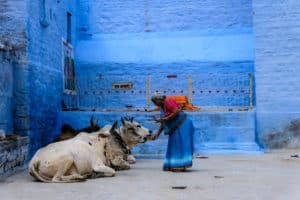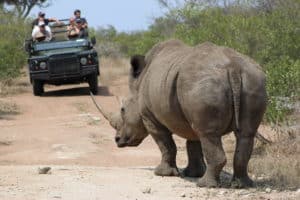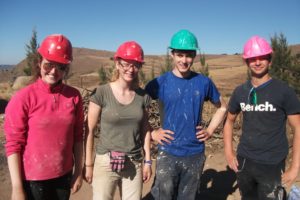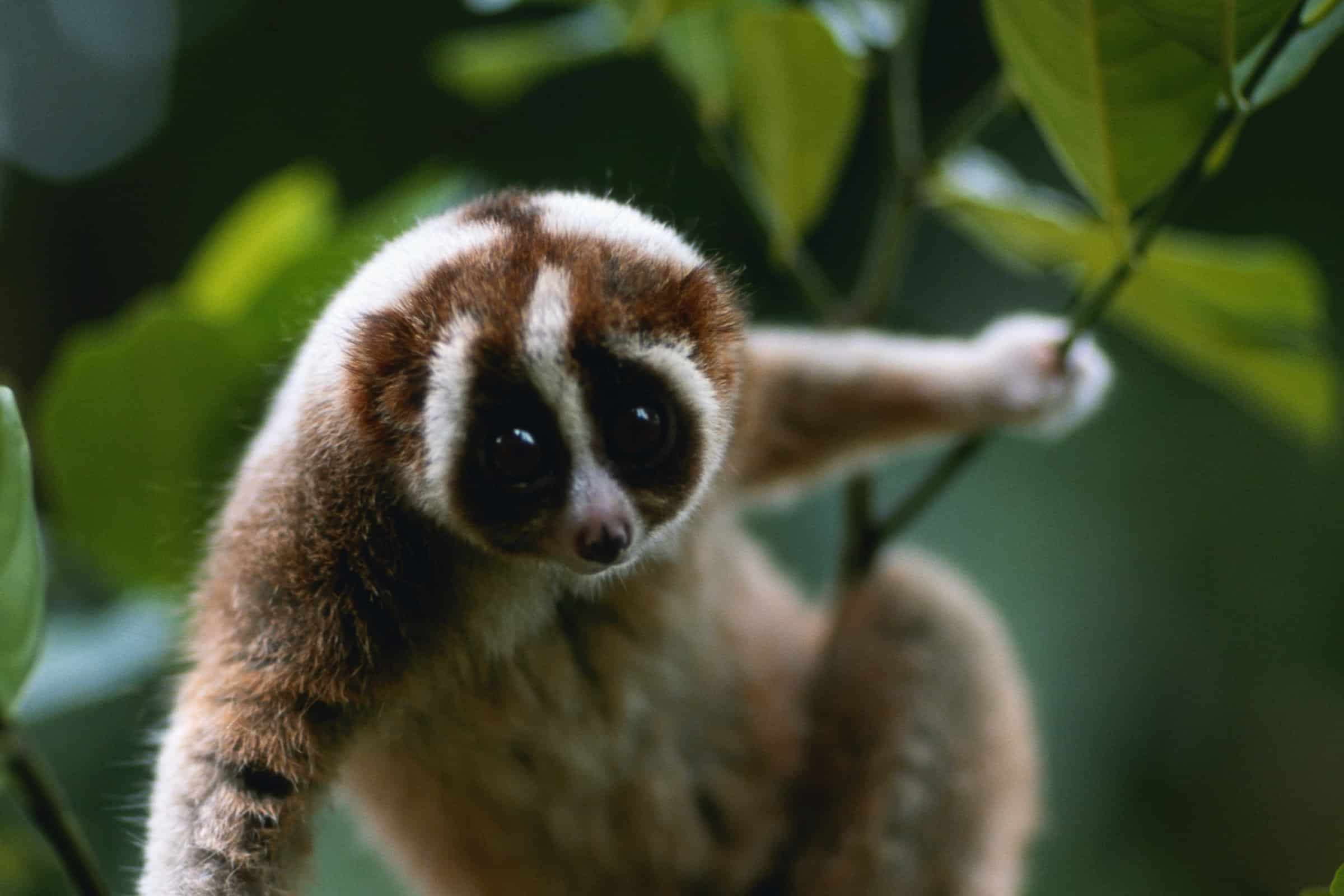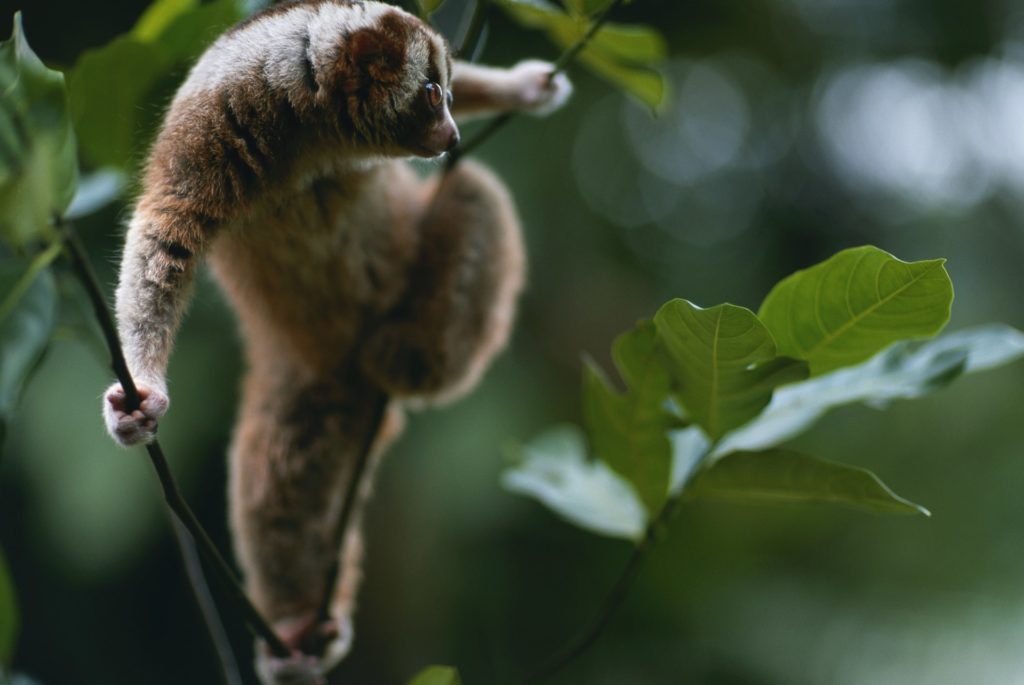There is a unique primate called the slow loris. Not only are these one of 10 smallest primates in the world, they are also the only venomous primate in the world. Yes, a venomous primate!
With my interest piqued, I started studying more about this close cousin of ours. The slow loris comes from the genus Nycticebus which consists of four species: Pygmy, Javan slow loris, Sunda slow loris and our very own Bengal slow loris. The Bengal slow loris has the largest distribution of all the slow lorises and can be found in Bangladesh, Cambodia, southern China, Northeast India, Laos, Burma, Thailand, and Vietnam.
Slow Loris Facts
- The Bengal slow loris is nocturnal and arboreal, occurring in both evergreen and deciduous forests.
- It prefers rainforests with dense canopies, and its presence in its native habitat indicates a healthy ecosystem.
- It is a seed disperser and pollinator, as well as a prey item for carnivores such as pythons and hawk eagles.
- Its diet primarily consists of fruit, but also includes insects, tree gum, snails, and small vertebrates, so pretty varied.
- The species lives in small family groups, marks its territory with urine, and sleeps during the day by curling up in dense vegetation or in tree holes.
- It is a seasonal breeder, reproducing once every 12–18 months and usually giving birth to a single offspring.
- For the first three months, mothers carry their offspring.
- They can live up to 20 years.
Brachial Glands of the Slow Loris
To begin let us first understand “brachial glands”. The flexor surface or the ventral side of the elbow has a slightly raised but barely visible swelling termed the brachial gland. Observations from captive slow lorises show that when the animal is disturbed during handling, they secrete about 10 microlitres of clear, strong-smelling fluid in the form of an apocrine sweat (exudate) from their brachial gland. The brachial gland is active in lorises as young as 6 weeks old.
When disturbed slow lorises assume a defensive stance and they bend their heads downwards between uplifted forelegs, rubbing the brachial gland exudate onto their head and neck.
The Difference Between Venomous and Poisonous
The main difference a venomous and a poisonous animal is that a venomous animal injects toxins into its victim’s body by bite or sting. A poisonous animal, on the other hand, produces toxins that are poisonous once inhaled or ingested like a Puffer Fish. Medical literature shows slow loris injuries to humans come from bites and not from ingesting their toxins.
Are Lorises Venomous?
Well, not quite….
Lorises have got strong jaw muscles and pointed teeth with cutting edges easily piercing human skin or thin gloves. Health problems after slow loris bites may be either due to presence bacteria and viruses transferred by bites or due to an anaphylactic shock (extreme allergic reaction). Loris brachial gland secretion includes two toxins, made inactive by inhibitors. However, when mixed with saliva the inhibitors break down and the mixture becomes toxic. Hence why the loris licks around the glands.
The Fate of the Slow Loris
The biggest challenge that these beautiful creatures face today is the meat and pet trade. People will often buy loris as pets as they look adorable. However, as in the case of all exotic pets, most of these pet owners do little to no research about the species and have no clue about how to raise one in a home environment. Often this unknowingly creates an environment or a situation harmful for the species.
Sense India provides guided tours which includes opportunities to see the Bengal Slow Loris such as our Indian Jungles holiday.
